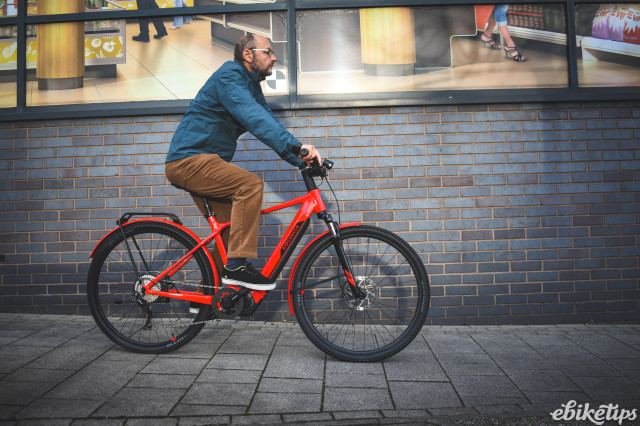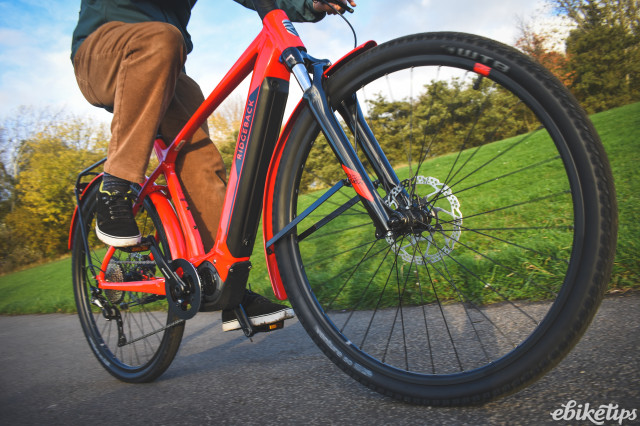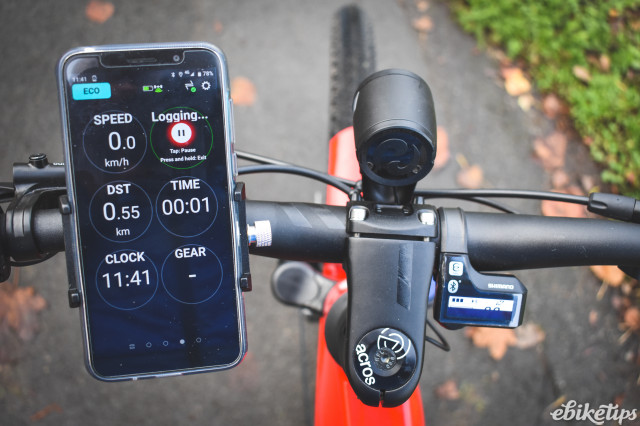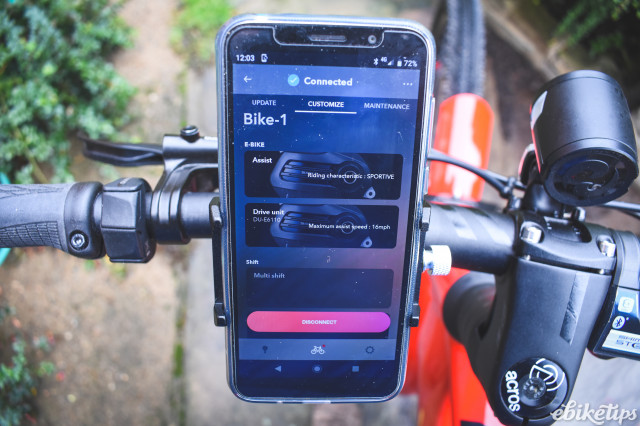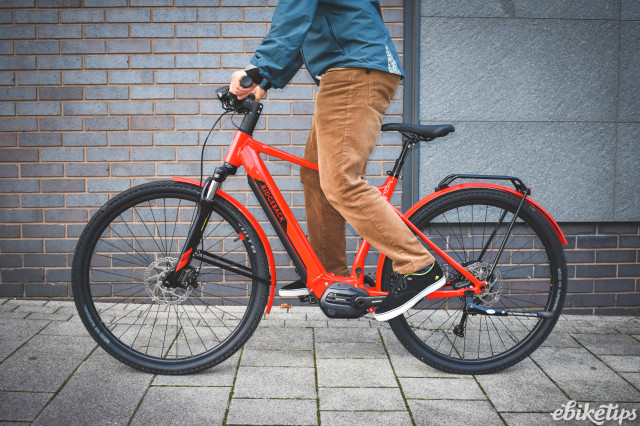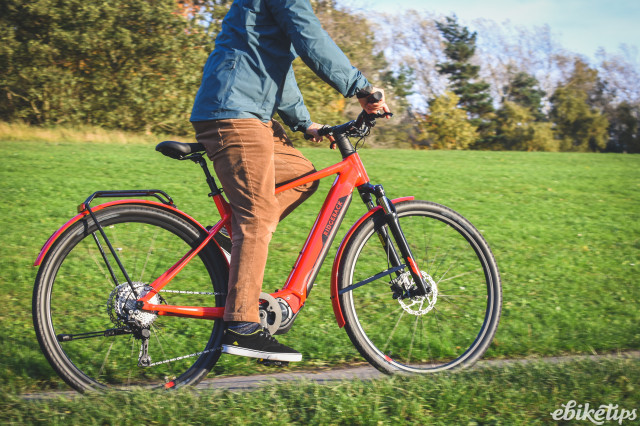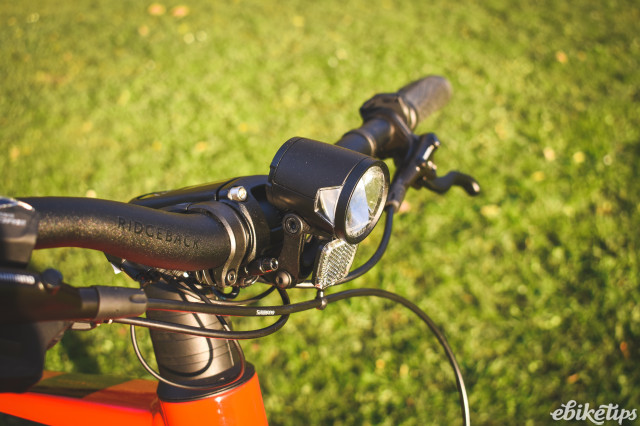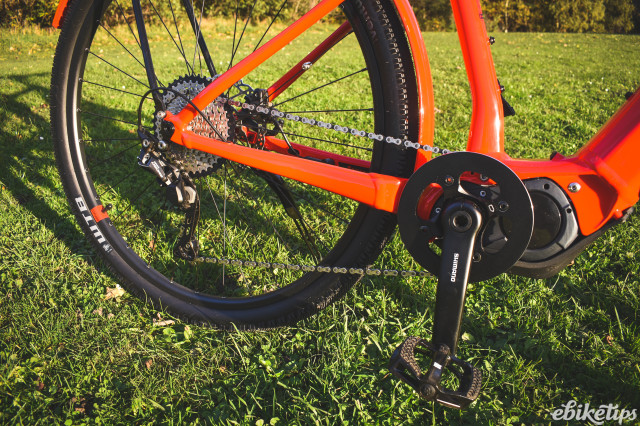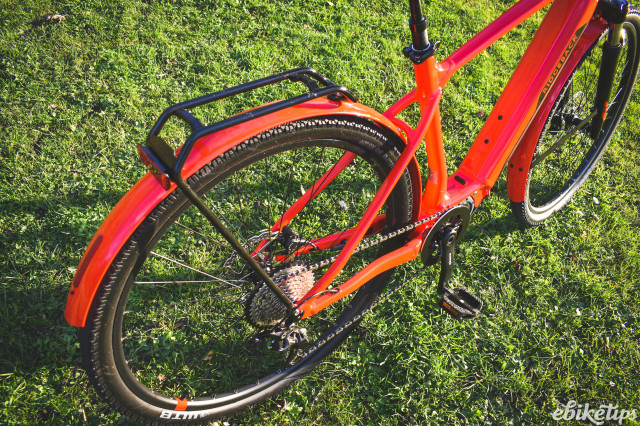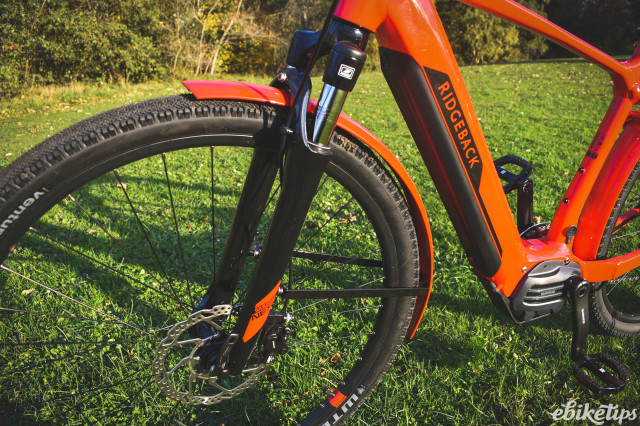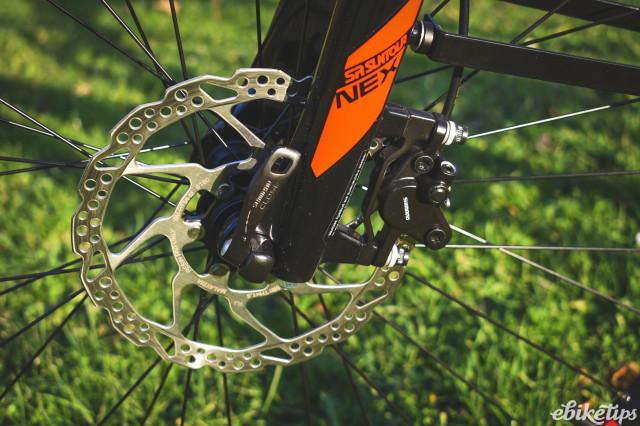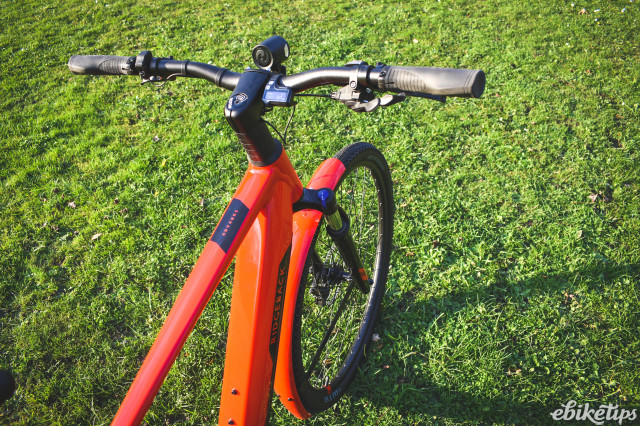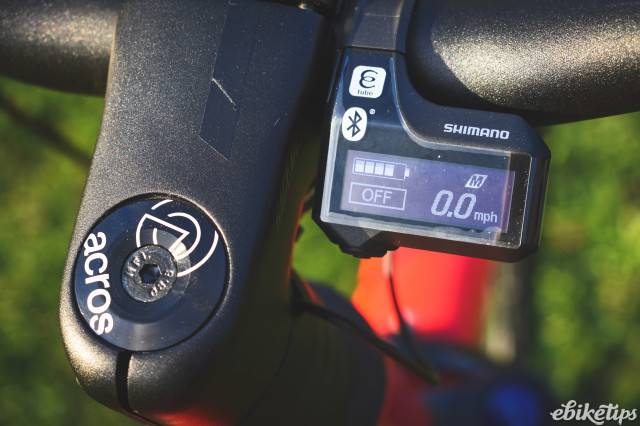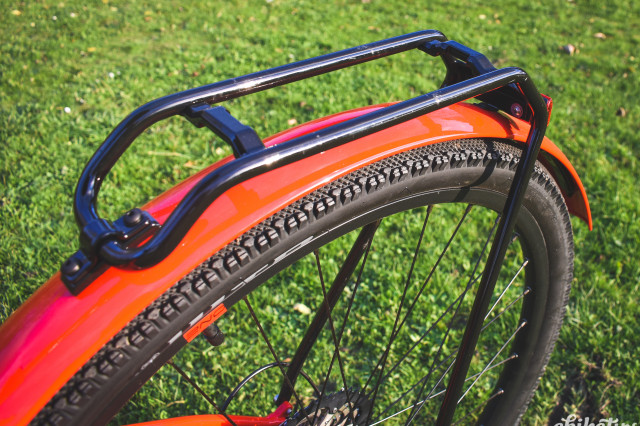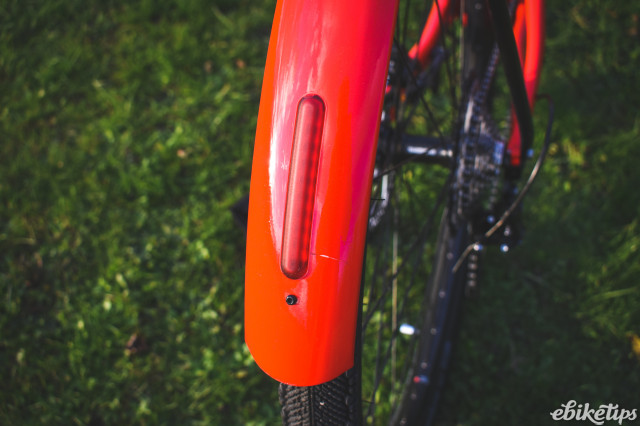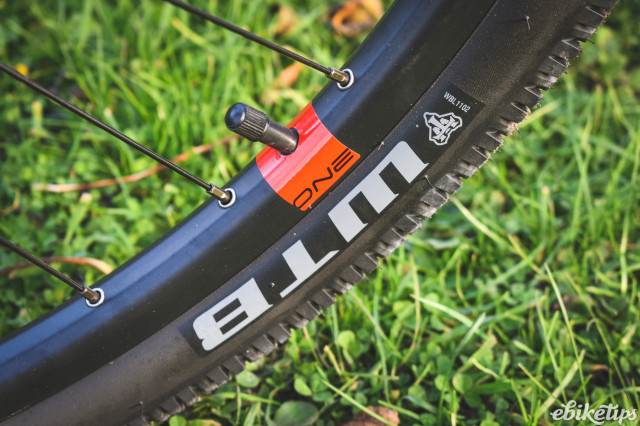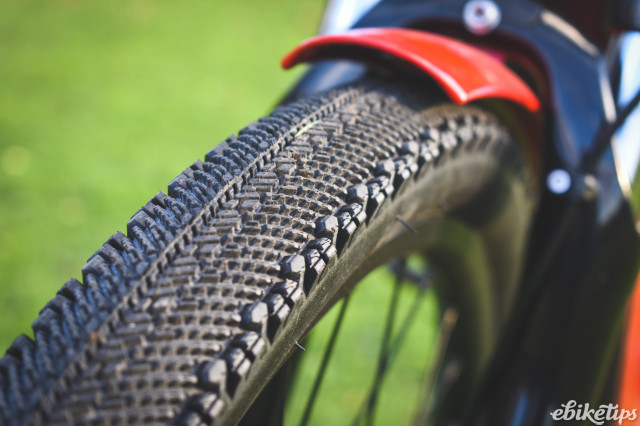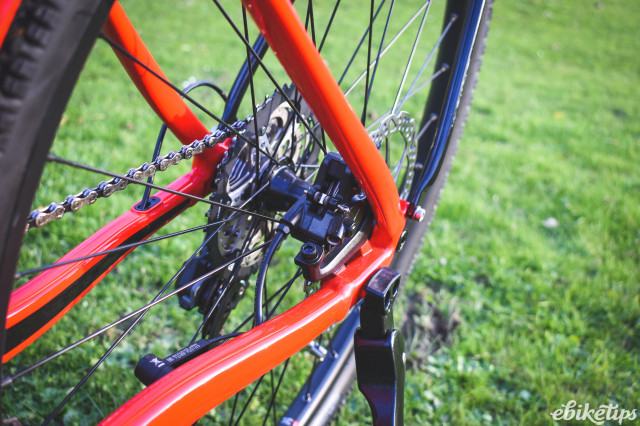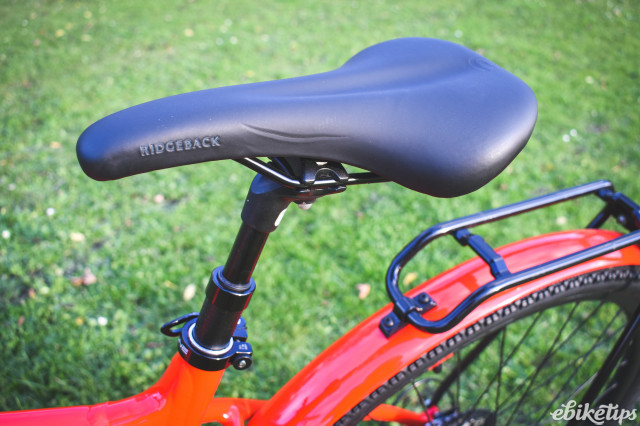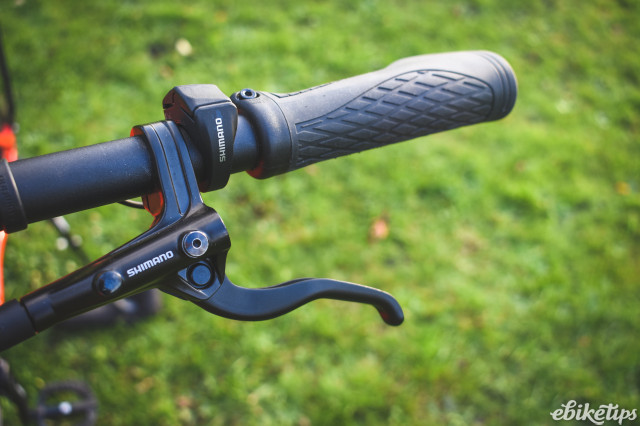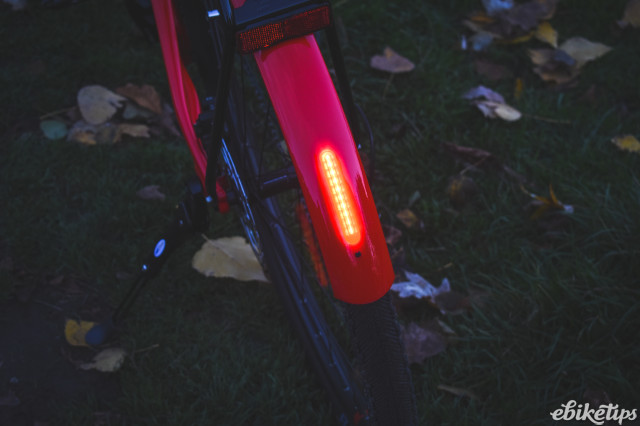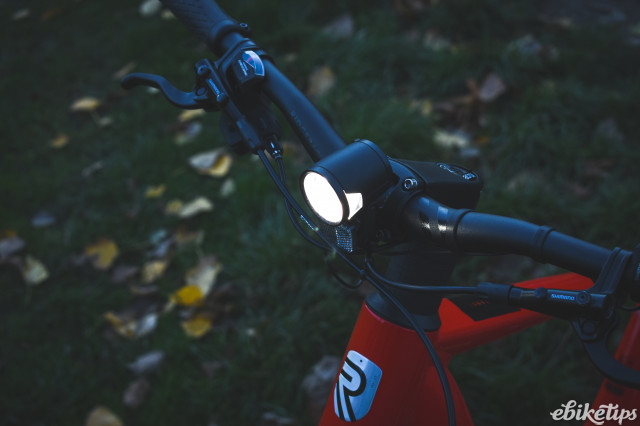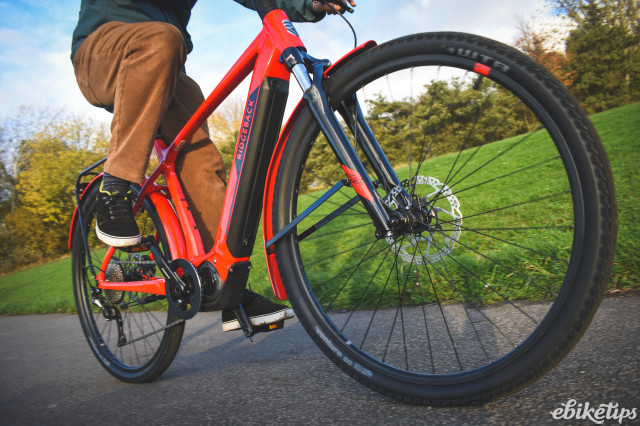Ridgeback Advance
Overview
- Superb style
- Smooth yet powerful motor performance
- Bigger battery would match the big price tag
- Connectivity options could be expanded further
Ridgeback have a strong history in touring and commuter bikes and this strikingly coloured, sporty electric hybrid offering adds to that pedigree. It’s also a nice addition to their wide range of e-bikes, which cover a lot of bases, featuring no fewer than three cargo models and seven other urban and trail models. All their electric models use either Shimano mid-drives or Promovec and Sportdrive (Dapu) hub motors and mid-drives.
The Advance 2021 model is their top-of-the-range e-bike outside of their e-cargo models and uses Shimano’s E61000 mid-drive, which we have been really impressed with before, allied with a frame-integrated 504Wh Darfon battery.
Striking Looks, Smooth Design
The Advance’s looks are striking, with the hyper-real red paint job ensuring you’ll stand out. It’s the epitome of the modern integrated trend for e-bikes too; not only is the battery smoothly integrated into the frame but all the cables from the bars to the rear of the bike disappear into the headset area giving the bike a super clean look at the front as well as the back.
The other thing that strikes you is the almost industrial quality of the build, with metal mudguards and even thick metal mudguard stays plus metal platform style pedals with grippy rubber inserts. The rear mudguard has the dual purpose of concealing the pannier rack stay and housing a fully integrated and brilliantly effective rear light (both front and rear LED lights are powered by the main e-bike battery).
At the front end Ridgeback have gone with the minimalist E7000 display and a centre-mounted powerful LED, Herrmans H-Black MR8 E, and small power level control buttons by your left thumb.
The battery can be charged on the bike or removed by easily slipping off the cover and unlocking it so it drops out of the bottom of the frame. It’s not clear why Ridgeback have chosen a Darfon battery rather than Shimano’s own brand but Darfon are a very reputable brand so it shouldn’t really raise any eyebrows.
The WTB Venture 700x50c cross-country style tyres are aggressively treaded and together with the Suntour 63mm travel steel sprung forks and suspension seatpost mean the bike is clearly equipped to tackle modest off-road conditions, though smoother surfaces are clearly its forte.
To complete the bike’s solid commuting / city bike credentials there is a kickstand and a smooth-looking but well-built rear rack whose design is again very nicely integrated into the rear of the bike.
The Ride
As our test of the Triumph Trekker GT showed, Shimano’s E6100 mid-drive is a real star. It’s worth echoing our findings there:
‘Don’t be fooled by the relatively modest torque rating of 60 Nm (higher performing motors have significantly higher ratings) as it clearly rewarded a bit of rider effort up the hills with plenty of motor power…. These lower specced motors may need a bit more human input than their higher specced cousins but they achieve much the same thing in most riding circumstances.
‘The torque sensing on the Shimano E6100 is great and responds well to heavy pressure, and not so much to light pressure and high cadence (other systems do). Personally I like it that way around as I usually want the power when I step on the pedals hard, not when spinning along under easier conditions.’
In addition, it’s quiet in operation and nice to ride with the power turned off. Our testing also confirmed it’s simply one of the most – if not the most – economical motors we’ve come across, with the slowly disappearing battery bar logo on the Ridgeback Advance suggesting a range of around 75 miles from single charge if ridden with a careful thumb on the power level buttons. Very likely after tuning the motor down from 60Nm to 50Nm (see Connectivity below) the range would be even more.
The Advance offers a sporty riding position, but pretty comfortable with it, due to a 9 degree backsweep on the riser bars. The E7000 display is small but crisp and clear, with loads of metrics from which to choose (again see Connectivity below) but being centrally located it does require you to take a hand off the bars to scroll through the different data displays, though your smartphone can also be bluetoothed to the bike and used as a customisable display.
Front and rear lights are worthy of note as they are super bright making you super visible and having the front light easily tiltable in front of you is a super practical feature too. The front Herrman’s light’s combination of wide spread and powerful central spot make riding unlit country roads and tracks at night a piece of cake.
Hydraulic disc brakes and a Shimano Deore 10 speed derailleur setup are about what you would expect on such a premium e-bike, though it would have been nice to have at least an option to try it with Shimano’s 5 speed hub gear unit, designed specifically to go with mid-drives, despite the reduced gear range it would give.
Connectivity and Impressive Auto Navigation
Bluetooth connectivity lets you tinker with the E7000’s display settings, adjust the maximum torque on the motor and use your smartphone for ride info and for route logging and navigation. The E7000 unit itself has inbuilt bluetooth connectivity so there is no need to buy any of the extra electronic paraphernalia required to connect to some of the more basic Shimano display setups.
Using Shimano’s E-Tube Project app you can add or remove travel time, average speed, max speed, cadence and current (clock) time to the permanent display settings of current speed, trip distance, odometer and range.
The same app also has a motor settings section that lets you opt for a ‘Comfort’ configuration at a max torque of 50Nm or a Sportive configuration at 60Nm. These can be changed on the fly once the app is downloaded, though you’ll probably want to stop and open it up as there is no reason to have it open otherwise.
If you want to use your smartphone as an enhanced display option you can download Shimano’s E-tube Ride app which lets you customise and swipe through several display screens of feedback including all the usual suspects.
There is also a handy map screen which uses maps via Mapbox’s opensource mapping which will download maps on the fly or give you the option to download mapping some 15km around your current location every 30 days.
Most useful of all for me as an avid touring e-biker was the ‘Create a Route’ function. The last automatic route creation tool I tried was on a GPS unit that was quite useful but certainly had its shortcomings. By comparison the Shimano app is much more basic in terms of functions offered but, unlike the GPS system that will remain nameless, the route creation feature in Shimano’s Ride app is superb. It suited me down to the ground as someone who always opts for a slightly slower traffic-free route over a faster but busier road route – it identified excellent quiet routes locally that would be more or less the route I would take based on local knowledge. It would be great to try this out in a busy city like London where it could save a lot of time figuring out the fastest route. It even planned routes for me right across Europe in a matter of seconds using some lovely looking quiet roads and cycle paths.
If this app can be upgraded so that your location on the map background stands out much more, so that it features opencyclemap as the background mapping and so that it lets you download GPX files it would be the perfect tool for my long distance e-biking tours. Although I don’t use Strava, users of it might find it useful to upload logs of their ride to it from the Shimano app.
Other Shimano app options would work on e-bikes with electronic and automatic Di2 gearing and if you choose to fit a cadence sensor, none of which the Advance had.
I found both apps easy to download and easy to connect to the bike once I had found my way to the not-that-obvious connection option in the connection screen. However, there doesn’t seem to be any good reason from this end-user’s point of view for Shimano separating out ride metrics in the Ride app from ‘background’ settings in the Project app – it’s just two lots of software to deal with rather than one. The software may well come on leaps and bounds in the future and no doubt it will all be upgradeable remotely over the airwaves so I’ll certainly be keeping my eye on it.
Summing Up
Undoubtedly this is a very solidly built and extremely efficient commuting and touring machine with lashings of style to boot. The price tag is really the only sticking point, especially when you don’t get Shimano’s maximum capacity 630Wh battery or air suspension at the front. There are other e-bikes out there with similar or more powerful mid-drives and bigger battery capacities for considerably less money.
But of course some buyers may well be tempted by the lovely sleek design, the fantastic build quality and the flexibility that the extra wireless connectivity brings which many other e-bikes certainly don’t have.
